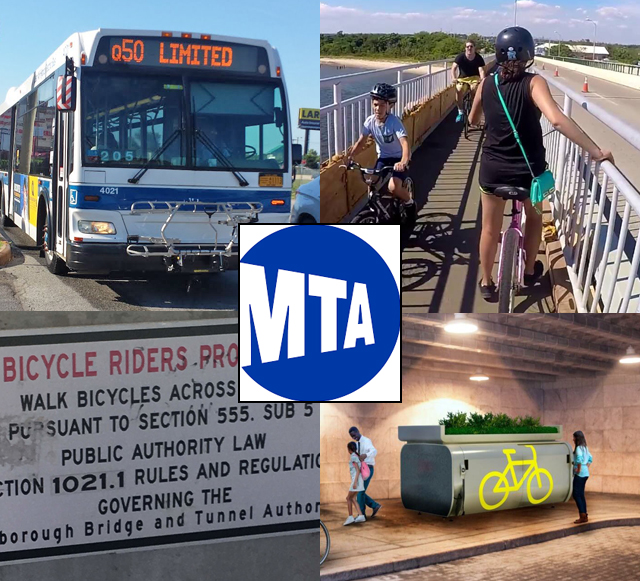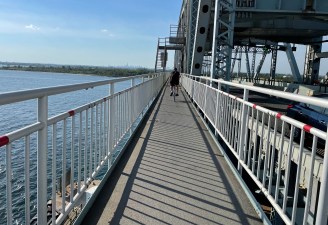MTA Promises to Do Better on Bike and Pedestrian Access — And Needs Your Help

It’s no longer a bridge too far.
The MTA announced (on the Friday afternoon before Memorial Day, alas) that it is moving ahead with a “landmark strategic action plan to enhance bicycle, pedestrian, and micromobility access” to the agencies trains and facilities — the first step forward since Gov. Hochul signed a state bill last year requiring the agency to do better for cyclists.
As a first step, the agency is seeking public comment and has hired Sam Schwartz Engineering as a consult to “provide critical expertise and support” to the creation of the strategic plan, which will be released later this year, the agency promised.
The goal, the agency said, is to “creating equitable access to transit system and supporting sustainable transportation modes.”
One advocate who has been pushing the agency and the state legislature for years said he was satisfied with the first step.
“I’ve been pleased with the seriousness MTA has brought to the bike-planning mandate and the consultant team looks very good,” said Jon Orcutt, a former city Department of Transportation official now with Bike New York.
According to the MTA, the strategic action plan will:
- Improve bicycle, pedestrian, and micromobility access to subway stations and bus stops
- Improve access at Long Island Rail Road and Metro-North Railroad stations
- Integrate trip planning and payments with bike-sharing and other micromobility services like electric scooters
- Improve pedestrian and bicycle access to and on MTA bridges
That last one is certainly not least. Cyclists have long complained of restrictions over key spans such as the Triboro (now officially the Robert Kennedy) Bridge and on bridges to the Rockaways. But mostly, it seems, the agency is focused on transit.
“We want to improve customer access to our environmentally friendly MTA services, however they get to their train or bus,” MTA Chairman and CEO Janno Lieber said in a statement. “As a cyclist myself, I know that biking can be the perfect complement to mass transit. This plan improves access to our services through cycling, walking, and micromobility and will help bring riders back and reduce our carbon footprint.”
Queens Assembly Member Jessica González-Rojas, who passed the bill with Bronx state Sen. Alessandra Biaggi, issued a statement that specifically highlighted the MTA bridges.
“Increasing access of cyclists to MTA bridges is a matter of environmental justice, public health, and labor justice,” she said.
Ken Podziba of Bike New York also pointed out that better conditions for cyclists puts the MTA on the right side of history because the “improvements will substantially decrease the region’s dependence on cars and thereby reduce greenhouse gas emissions.”
If, indeed, the MTA is getting serious about bike access to its facilities, it is long overdue. Only recently did the agency eliminated the requirement that cyclists obtain a permit to bring a bike aboard an LIRR or Metro-North train. And earlier this year, the agency installed an Oonee mini at Grand Central Terminal. The agency said that more than 60 percent of Metro-North and LIRR stations outside of New York City include bicycle parking, though it is not secure parking.
The agency’s history is checkered. As Streetsblog reported last year, the agency has not only ignored advocates’ call for a bike lane on the Verrazzano-Narrows Bridge, but buried a report that provided a cost-effective means for achieving it.
The public can submit comments via this webpage. More information is available on the project webpage.

